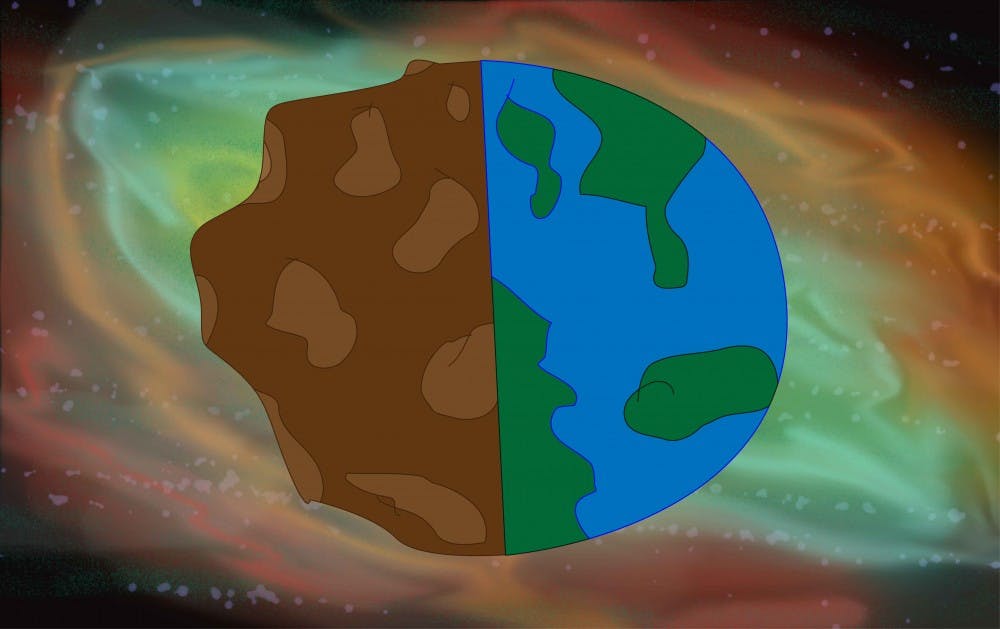The long-standing question of where Earth’s water originates from now has a new answer.
A team of ASU geoscientists have theorized that at least some of Earth’s water was formed during the embryonic phase of the rocky planet when it interacted with a solar nebula.
Peter Buseck, a Regents’ professor in the School of Molecular Sciences who led the team of researchers, said this research was driven by a question of Earth’s early history, but currently does not necessarily hold present-day applications.
“A lot of basic science or fundamental science has implications that only develop in the future,” Buseck said. “It’s what we call curiosity-driven science. We wanted to solve some fundamental questions about the Earth and its early history, but it’s not designed to answer specific societal problems.”
Steven Desch, a professor in the School of Earth and Space Exploration, said one possible application of this research is insight into the process of the formation of other planets and determining whether other planets can also have water.
“We want to know where Earth got its water because that will tell us if we’re a very unusual planet or if this is a very common outcome," Desch said.
This theory of an overlooked source of Earth’s water connects water formation to the relationship between iron in the early Earth and hydrogen in solar nebulae.
Jun Wu, a research assistant professor, said that the gas interaction adds on to an old theory of where Earth’s water came from.
“Before this research, the prevailing theory for the origin of Earth’s water used to be a predominant supply of chondritic materials, like meteorites," he said. "These building blocks of the Earth can accrete together and they could eventually de-gas into hydrogen and be oxidized into water.”
The new theory does not disprove the old theory, but instead adds to it.
This hydrogen gas, along with other gasses in the nebula, formed a thick proto-atmosphere around the embryo causing its surface to melt. The molten surface, called a magma ocean, dissolved hydrogen from the proto-atmosphere and pulled it through the core along with the heavier iron particles.
According to Wu, only a small percentage of the Earth’s water would have come from the solar nebula, but the Earth’s iron core could be a large reservoir for the majority of Earth’s hydrogen. This means that the core alone contains enough hydrogen for approximately four or five global oceans.
“We are linking the hydrogen to Earth’s water because water is two hydrogen atoms and one oxygen atom,” Wu said. “Oxygen is abundant on Earth, so the origin of Earth’s water is equivalent to the origin of Earth’s hydrogen in that sense.”
The team plans on conducting physical experiments to simulate the Earth’s high-pressure core and quantify the dissolution of hydrogen in molten iron.
The goal is to understand more about the planet and whether or not anything can be done about the hydrogen in the Earth's core.
“Many of the advances that we have that make our lives better result from scientific advances that came about as a result of people just trying to answer interesting questions without the intent of producing a product,” Buseck said. “One of the goals of the University is to explore unanswered questions and try to find ones that are interesting, but it’s hard to know which of those will result in applications.”
Reach the reporter at kalbal@asu.edu or follow @KarishmaAlbal on Twitter.
Like The State Press on Facebook and follow @statepress on Twitter.




